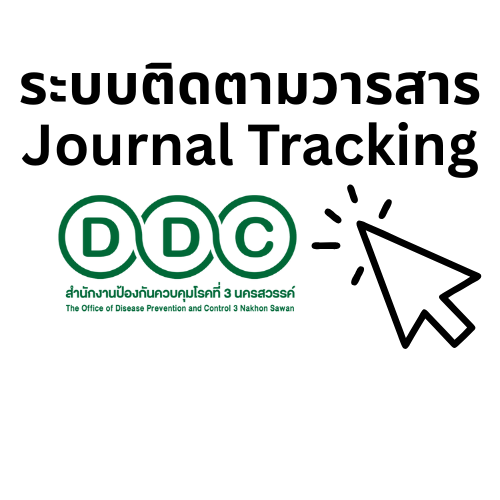Health Literacy on Diabetes and Hypertension and Health Behavior among the Elderly in the Upper Central Region of Thailand
Keywords:
Health Literacy, Health Behavior, Diabetes and Hypertension, the ElderlyAbstract
The trend among the elderly is toward more and more chronic diseases. Therefore, the impact will increase as the country evolves into an aging society. The two objectives of the study were to investigate the factors related to health literacy and health behaviors and to analyze a model of the causal relationship that influences health behaviors in the elderly. The research design was a mixed-methods study, including a qualitative study in which data were collected through focus group discussions and in-depth interviews with 12 key informants who are aging healthily using a snowball sampling technique, combined with nonparticipant observations, and a quantitative study in which 400 samples between the ages of 60and 79 were selected using multistage random sampling with the interview forms. Data were collected between May and September 2022 and analyzed using content analysis, descriptive statistics, and a structural equation model. The research results can be summarized as follows: The key informants practiced good health behaviors on a daily basis in terms of food consumption, exercise, alcohol and beverages, and cigarette smoking. They were able to adjust and evaluate their health literacy to improve their health. The factors that were positively associated with health behaviors were health literacy (0.39), beliefs and attitudes (0.26), knowledge received (0.21), year of education (0.14), status (0.12), knowledge (0.10), income (0.09), health history (0.09), and neighborhood (-0.13) at a significant level (p-value < 0.05, 0.01, 0.001). The model of causal relationship influencing health behavior showed that health literacy had a direct influence of 58.0 percent and knowledge, belief and attitude, and health literacy had an indirect influence of 26.0 percent each. All variables in the model could be used to explain the health behavior of 33 percent. The model developed has relevance to the empirical data (χ2 = 45.757, P = 0.055, DF=32, CMIN/DF = 1.430, RMR = 0.167, GFI = 0.980, AGFI = 0.960, RMSEA = 0.033). The relevant agencies should use the results of this study to promote health behaviors in the aging population by prioritizing implementation based on the factors identified in this study.
References
Bongaarts J. Human population growth and the demographic transition. Philos Trans R Soc Lond B Biol Sci. 2009. 27; 364(1532):2985-90. doi 10.1098/rstb.2009.0137. PMID: 19770150; PMCID: PMC2781829.
Foundation of Thai Gerontology Research and Development Institute (TGRI). Situation of the Thai Elderly 2019. Nakhon Pathom: Institute for Population and Social Research, Mahidol University. 2020.
Foundation of Thai Gerontology Research and Development Institute (TGRI). Situation of the Thai Elderly 2020. Nakhon Pathom: Institute for Population and Social Research, Mahidol University.2021.
Pramote Prasartkul. (editor). Situation of the Thai Elderly 2019. Institute for Population and Social Research, Mahidol University. Foundation of Thai Gerontology Research and Development Institute (TGRI). 2018.
Thailand Development Research Institute. The Report of the Study, Tittle “The Estimate of Public Health Expenditure in 15 Years.". Thai Health Promotion Foundation. 2018.
Liu C, Wang D, Liu C, Jiang J, Wang X, Chen H, et al. What is the meaning of health literacy? A systematic review and qualitative synthesis. Fam Med Com Health 2020 ;
: e000351. doi:10.1136/fmch-2020-000351
Sørensen K, Van den Broucke S, Fullam J, Doyl G, Pelikan J, Slonska Z, et al. Health literacy and public health: A systematic review and integration of definitions and models. BMC Public Health 12, 80 2012. https://doi.org/10.1186/1471-2458-12-80.
Wimon Roma, Saichon Kloyiam. Thai Health Literacy Survey (THL-S) of Thais aged 15 years and above, 2019. Nonthaburi: Health Systems Research Institute (HSRI). 2019.
Lu J, Sun S, Gu Y, Li H, Fang L, Zhu X, et,al. Health literacy and health outcomes among older patients suffering from chronic diseases: A moderated mediation model. Front Public Health. 2023 Jan 10; 10:1069174. doi: 10.3389/fpubh.2022.1069174. PMID: 36703841; PMCID: PMC9873261.
Souza JG, Apolinario D, Magaldi RM, Busse AL, Campora F, Jacob-Filho W. Functional health literacy and glycemic control in older adults with type 2 diabetes: a cross-sectional study. BMJ Open. 2014 Feb 12;4(2): e004180. doi: 10.1136/bmjopen-2013-004180. PMID: 24525392; PMCID: PMC3927799.
Schaeffer D, Berens E-M, Vogt D, Gille S, Griese L, Klinger J, et al. Health Literacy in Germany: Findings of a Representative Follow-up Survey. Dtsch Arztebl International. 2021;118(43):723–9.
Pedersen SE, Aaby A, Friis K, Maindal HT. Multimorbidity and health literacy: A population-based survey among 28,627 Danish adults. Scand J Public Health. 2021. [published online ahead of print, 2021 Oct 12].
Kunthida Kulprateepunya, Wirada Atsawametakul, Prangtip Thasanoa Elter, Jamjuree Saelue, Pennapa Pisaipan, Aranya Namwong. Health status of elderly in Thai society. UMT Poly Journal.2020; 17(2): 581-94.
Kunwadee Rojpaisarnkit, Yuvadee Rodjarkpai. Well-being of the Elderly Living in Urban
and Rural Areas of Thailand. The Public Health Journal of Burapha University. 2018;13(1) :113-27.
Protheroe J, Whittle R, Bartlam B, Estacio EV, Clark L, Kurth J. Health literacy, associated lifestyle, and demographic factors in the adult population of an English city: a cross-sectional survey. Health Expectations. 2017; 20(1): 112–19.
Xie Y, Ma M, Zhang Y, Tan X. Factors associated with health literacy in rural areas of Central China: structural equation model. BMC Health Serv Res. 2019; 19(1):300.
doi: 10.1186/s12913-019-4094-1. PMID: 31077197; PMCID: PMC6509858.
Wolf MS, Feinglass J, Thompson J, Baker DW. In search of “low health literacy”: Threshold vs. gradient effect of literacy on health status and mortality. Social Science & Medicine, 2010. 70, 1335-41. 27. Version 3. WORKING DRAFT Updated July 2015 [Internet]. [cited 2021 March 28]; Available from:https://www.who.int/immunization/monitoring_surveillance /Vaccination_coverage _cluster_survey_with_annexes.pdf.
Aldosokey N, Elshafea I, Mahmoud N, Abdelatey Hassan L. Relation between Health Literacy and Health Promoting Behaviors among Elderly at Tanta City. Tanta Scientific Nursing Journal. 2021; 21(2): 198-222. doi: 10.21608/tsnj.2021.185223.
Kunwadee Rojpaisarnkit. Factors Influencing Health Promoting Behaviors of Thai Elderly: A Case Study of Middle Old Age in Samut Prakan Province. Journal of Nursing Science Chulalongkorn University. 2016; 28 (3): 68-83.
Huang HY, Kuo KM, Lu IC, Wu H, Lin CW, Hsieh MT, et.al. The impact of health literacy on knowledge, Attitude, and decision towards hospice care among community-dwelling seniors. Health and Social Care in the Community. 2019; 27(5), e724-e733. https://doi.org/10.1111/hsc.12791.
Downloads
Published
How to Cite
Issue
Section
License
Copyright (c) 2023 Journal of Disease and Health Risk DPC.3

This work is licensed under a Creative Commons Attribution-NonCommercial-NoDerivatives 4.0 International License.
Copyright notice
Article published in the Journal of Disease and Health Risk DPC.3 Nakhon Sawan. It is considered a work of academic research and analysis as well as the personal opinion of the author. It is not the opinion of the Office of Disease Prevention and Control 3, Nakhon Sawan. Or the editorial team in any way Authors are responsible for their articles.
Privacy Policy
Name, address and e-mail address specified in the Journal of Disease and Health Risk DPC.3 Nakhon Sawan. It is used for identification purposes of the journal. And will not be used for any other purpose. Or to another person.









